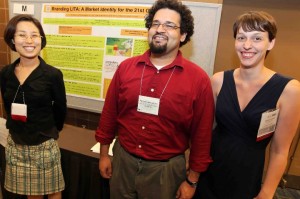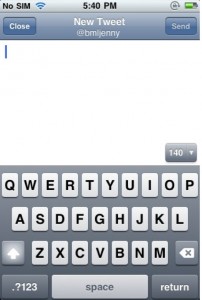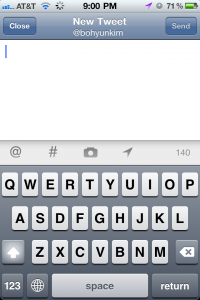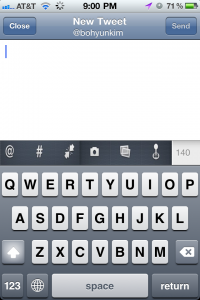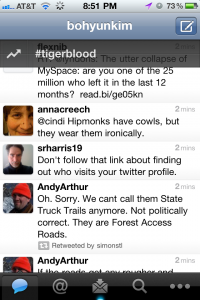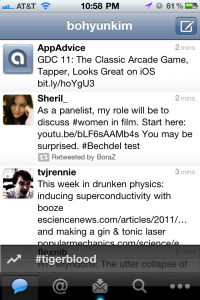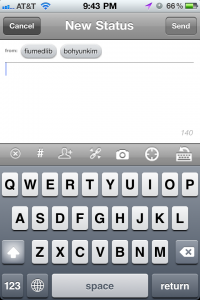No Hyperbole
Seth Godin recently wrote a blog post about the future of the library. His question is mostly directed to public libraries, and so many responses came out already. (Among many see the posts by Bobbi Newman, Nancy Dowd, Buffy Hamilton.) But the question applies about the same to academic libraries. Godin’s argument goes like this:
- Librarians and libraries’ value lie in playing the role of the middlemen between the public and scarce content (books/information ).
- Books and information are no longer scarce and rather abundant in the digital era.
- The public can now directly access books and information without mediation by librarians and libraries.
- Therefore, libraries and librarians may become no longer needed.
- In order to avoid extinction, libraries and librarians must change from being the middlemen and the warehouse of content.
A few objections can be immediately raised by library-insiders:
- Libraries are more than warehouses of books, since they provide valuable services, programs, and physical space.
- It costs to obtain information, which makes it, by definition, not abundant.
- Information is not so easily accessible considering how much instruction librarians have to provide the public regarding how to use them.
While these objections may well have some points, would they make sense to library users? Are library users convinced that these objections prove the sufficient value of libraries and librarians? If you work at an academic library, you would have met at least one academic who asks why a library is still needed. They say everything is online. I bet you have immediately cited the objections above. Did those objections convince the person? If you work at a library, you would have met a library user who thinks librarians are mere clerks who purchase and shelve books. Did bringing up the points cited above persuade the person to think differently? Or did you just get a shrug out of the person?
To the eyes of most library users, the most important benefit lies in books and articles, not in reference, instruction, or any other library services or programs. So they regard libraries as warehouses and librarians as middlemen. If the survival of future libraries depends on the users’ perception and judgment on the value of libraries, the concern Godin expresses is not necessarily hyperbole. And this public perception of libraries and librarians as warehouses and middlemen signifies the failure of proving the unique value of a library in the digital era.
What now?
What will take to persuade users to become the advocates of the future libraries? I don’t think raising the objections cited above will do the trick because they have been failing for a long time. Despite our best efforts, reference volume is going down and the place of library instruction in a curriculum is mostly marginal. If the cost for information goes down sufficiently and users can get faster and easier access, they may be willing to pay content-providers directly than libraries (indirectly through tuition/tax).
Looking back at the past and picking up the things that already have been tried with little success will not take us very far. And we don’t want to bet the future of libraries entirely on the current states of academic libraries being an accreditation criterion or those databases having unfriendly user interfaces.
Let’s Dream an Infectious Library Dream Together
I think it is time to stop arguing about how valuable libraries already are and start building some new visions about the future library. One idea that frequently comes up is the library as a community center connecting people with information. It’s not a bad idea, but it needs more details. How are libraries going to connect people with information in the way the mediation of libraries and librarians is ‘welcomed and appreciated’? Do our current libraries have a seed of the future libraries that beyond doubt presents indispensable value to library users? While possibilities abound, we do not have many convincing and attractive visions of future libraries that make sense to our users.
Here are some random ideas to start with. Not necessarily daring, inspiring, and by no means exhaustive or revolutionary but just to ignite more conversation. It is not easy to imagine things that do not exist yet. But right now, we need more imagination than criticism or skepticism. I hope and believe that if we have a worthwhile vision, we will be able to work to obtain sufficient resources to make it happen.
a. Libraries as TechShops?
This idea can apply to not only public libraries but also academic libraries such as an engineering or a design/architecture school library. Library users will go to libraries to check out technologies, learn and experiment, and collaborate on projects using the tools, learning resources, and staff knowledge that libraries offers.  See the details of this idea here:
“Is It Time to Rebuild & Retool Public Libraries and Make “TechShops�†– Make Magazine
http://blog.makezine.com/archive/2011/03/is-it-time-to-rebuild-retool-public-libraries-and-make-techshops.html
b. Libraries as Production Agencies?
The role of libraries has been traditionally focused on services that bring a third party’s product to users. But what if libraries place more weight on creating products of their own? Users will go to libraries to look for content that is curricular, educational, local, or for entertainment. Such content will not be simply curated and listed together but be produced as a complete stand-alone product. This will take libraries into the realm of content business.
c. Libraries as Institutional or Regional Knowledge Management and Preservation Agencies?
Even though libraries are already assuming this role to a certain degree, envisioning the future libraries as mainly a knowledge management and preservation agency will bring a significant shift in the library operation. Libraries will actively collect, curate, and provide access to the knowledge asset generated by an institution or a region that it serves. It will also function as a support center and a hub for those who create and produce such knowledge asset.
d. Libraries as a Competitive Intelligence Center?
Librarians could be trained to specialize in collecting, comparing, and analyzing data, which will only increase in volume in the digital era. Offering competitive intelligence service and products can significantly increase the value of libraries to the decision makers whether administrators in academia or small business entrepreneurs. The service and product offered in this case may be similar to those of corporate libraries through fee-based services.
e.  And many many more…
Add you own ideas here.
Do you have your own vision of future libraries? Let’s dream an infectious library dream together until we get to have multiple convincing pictures of the future library. Only two rules:
(i) Do not restrict your vision by current library structure, services, programs, Â staff, funding, or other existing conditions.
(ii) Imagine the value of a library that will appeal more to ‘users’ than to librarians.

